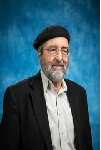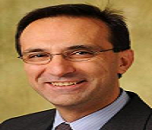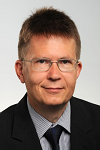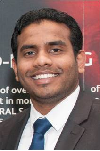Sessions and Tracks
Satellite Meeting throws light on thought provoking topics and recent research in the field of Satellite and Space Research namely, space missions, orbital mechanics, space exploration, earthquake engineering, satellite remote sensing and GIS, satellite communication and navigation, aerospace engineering and technology, climate change and weather forecasting, satellite dish, Asteroid Impact Mission (AIM), space weather and materials science in space.
Track 01: Satellite and its applications
Forecasting the future is uncertain. Nonetheless, in the satellite space, there’s a trend for ever-increasing flexibility, capacity, and service availability in addition to increasingly lighter, more compact, more affordable, and ergonomic personal and ground terminals. It is possibly to seek out applications in satellite-oriented air traffic management, customized land mobile radio broadcasting, and aeronautical satellite communication. It is even to expect incessant gains with reference to intelligent space communications systems. More over new technologies are yet to be developed in the satellite communication space.
Related Societies:
Europe: German Aerospace Center, Germany; International Society for Photogrammetry and Remote Sensing, Germany; European Space Imaging GmbH, Germany; National Aerospace Laboratory (NLR), Netherlands; European Association of Remote Sensing Laboratories (EARSeL), Germany; Remote Sensing and Photogrammetry Society (RSPSoc), UK.
USA: National Space Society, USA; ESRI conservation Program, USA; Wetland Studies and Solutions Inc, USA; The International Society of Automation, USA; Control System Integrators Association, USA ; Automation Association New York City, USA; Association for Advancing Automation, USA; AMT - The Association for Manufacturing Technology, USA; Automation federation, USA.
Asia: Geoscience and Remote Sensing Society, Japan; The Mars Society; Asian Association On Remote Sensing; IAENG Society of Industrial Engineering, China; Aero Terra Geomatics, India; Beijing Deserve Technology Co., Ltd., China; Fellows of the Australian Institute of Physics, Australia.
Track 2: Aerospace and Mechanical Engineering
Department of Aerospace & Mechanical Engineering will invest in state-of-the-art manufacturing technology and address the issue of energy in the context of the global energy environment. The current focus is on the globalised competitiveness and increased awareness of the environment which made the manufacturing significantly different with more emphasis on competitive technologies and management approaches. The control includes outlining Communication satellites, Space Missions, Space Applications, and Space Propulsion, planning and building earth stations, Satellite Launcher Technology, repairing and introducing satellite communication.
Related Societies:
Europe: GISCON Geoinformatik GmbH, Germany; The Computer Graphics Society (CGS), Switzerland; British Computer Society, Europe; Swiss Physical Society, Switzerland; Federation of European Simulation Societies (EUROSIM); ASIM - German Simulation Society, Germany.
USA: Society of Manufacturing Engineers, North America; The Institute of Industrial and Systems Engineers (IISE), USA; Society of Industrial Engineering (SIE) Philippines; Industrial and Operations Engineering (IOE), The Materials Research Society (MRS), USA; Materials Science and Engineering Societies MatES USA, The Materials Research Society of India (MRSI) USA, American Society for Testing and Materials (ASTM), USA; Society for the Advancement of Material and Process Engineering (SAMPE), USA.
Asia: Chinese Physical Society, China; Indian Physical Society, India; Japan Society of Applied Physics, Japan; Nepal Physical Society, Nepal; Physics Society of Iran, Iran; Science and Engineering Research Support soCiety (SERSC), South Korea; The Chinese Image Processing and Pattern Recognition Society, China.
Track 3: Remote Sensing Satellites and GIS
Remote sensing satellites can provide accurate and timely information of the disaster affected areas. Since the earthquake of 2005, SUPARCO has provided satellite imagery, damage assessment reports and other information to the disaster management and mitigation agencies. The turnaround time from a disaster occurring in Pakistan to the provision of imagery is less than two days. SUPARCO has also been involved in contingency planning in collaboration with UN agencies.
Related Conferences Satellite Conferences | Remote Sensing Conferences | GIS Conferences | Satellite Meetings | Remote Sensing Meetings | Space Events | Space Exploration Conferences
Related Societies:
Europe: SIMS - Scandinavian Simulation Society, Finland; Federation of European Simulation Societies (EUROSIM); ASIM - German Simulation Society; International Simulation and Gaming Association (ISAGA), Netherlands; Swiss Austrian German Simulation and Gaming Association (SAGSAGA), Germany.
USA: The Materials Research Society (MRS) USA, Materials Science and Engineering Societies MatES, The Materials Research Society of India (MRSI), American Society for Testing and Materials (ASTM), USA; Society for the Advancement of Material and Process Engineering (SAMPE) USA.
Asia: Taiwan’s Association For Virtual Reality And Augmented Reality, Taiwan; Hong Kong Society for Multimedia and Image Computing, Hong Kong; IACSIT Graphic and Image Processing Society; Visualization Society of Japan, Japan.
Track 4: Space Missions
Space Missions are spacecraft exploring the outer space by the use of astronomy and space technology. The Satellite Conference is entirely helpful for new research on space mission design. Just as space technology has advanced, the way we learn and work has changed dramatically in recent years. This conference combines the best research work and reference to cover the entire field, among the many features of this new approach are: Completely rewritten, updated, and expanded of Space Mission Analysis and Design, the most widely used text and reference in astronautics, covering a many topics. Such as human spaceflights, Missions to the Moon, Missions to Mars, Space Shuttle missions, Solar System probes.
Related Conferences Small Satellite Conferences | Space Exploration Events | Space Mission Conferences | Space Events | Space Conferences | Satellite Events | Satellite Conferences | Satshow
Related Societies:
Europe: Israel Association for Computer Vision and Pattern Recognition, Israel; Association of Pattern Recognition (APRP), Portuguese; Spanish Association of Pattern Recognition and Image Analysis, Spain; Danish Pattern Recognition Society, Denmark; Belarusian Association for Image Analysis and Recognition, Belarus.
USA: American Society of Mechanical Engineers, USA; International Mechanical Engineering Honor Society USA, Association for Computing Machinery, USA, Association for Manufacturing Technology, USA; UAMAE: Universal Association of Mechanical and Aeronautical Engineers, USA; American Indian Science and Engineering Society, USA, Aerospace and Electronic Systems Society, United States Association for Computational Mechanics, USA.
Asia: Australian Computer Society, Australia; Korean Human-Computer Interaction (HCI) Society – ISSIP, Korea; Science and Engineering Research Support Society (SERSC), South Korea; The Virtual Reality Society of Japan (VRSJ), Japan; Austrian Physical Society , Austria.
Track 5: Space Exploration
Space exploration, the investigation, by means of crewed and uncrewed spacecraft, of the reaches of the universe beyond Earth’s atmosphere and the use of the information so gained to increase knowledge of the cosmos and benefit humanity. The exploration of Mars has been an important part of the space exploration programs of the Soviet Union (later Russia), the United States, Europe, Japan and India. Dozens of robotic spacecraft, including orbiters, landers, and rovers, have been launched toward Mars since the 1960s. These missions were aimed at gathering data about current conditions and answering questions about the history of Mars. The Satellite Conference offers key insights into cutting-edge applications from global experts, start-ups, and the winners of Europe's major innovation competitions for space applications.
Related Conferences Remote Sensing Conferences | GIS Conferences | Earth’s Observatory Conferences | Satellite Conferences | Satellite Events | Satellite Meetings | Small Satellite Meetings
Related Societies:
Europe: Greek Association of Image Processing and Digital Media, Greece; International Society Of Dynamic Games, Finland; SIMS - Scandinavian Simulation Society, Finland; International Simulation and Gaming Association (ISAGA), Netherlands; Swiss Austrian German Simulation and Gaming Association (SAGSAGA), Germany; German Society for Photogrammetry, Remote Sensing and Geoinformation, Germany.
USA: International Society of Automation, USA; Plant-inspired Robotics and Bio-hybrid Society, USA; Biologically Inspired Robotics Laboratory, USA; The International Society of Automation, USA; Robotics and Automation Society, USA; American Society of Mechanical Engineers, USA.
Asia: Geoscience and Remote Sensing Society, Japan; The Mars Society; Asian Association On Remote Sensing; IAENG Society of Industrial Engineering, China; Aero Terra Geomatics, India; Beijing Deserve Technology Co., Ltd., China; Fellows of the Australian Institute of Physics, Australia.
Track 6: Artificial satellites and Space Structures
An artificial satellite is an object that people have made and launched into orbit using rockets. There are currently over a thousand active satellites orbiting the Earth. The size, altitude and design of a satellite depend on its purpose. Satellites vary in size. Some cube satellites are as small as 10 cm. Some communication satellites are about 7 m long and have solar panels that extend another 50 m. The largest artificial satellite is the International Space Station (ISS). The main part of this is as big as a large five-bedroom house, but including solar panels, it is as large as a rugby field.
Related Conferences Satellite Conferences | Satellite Events | Satellite Meetings | GIS Conferences | Remote Sensing Satellite Events | SatShow
Related Societies:
Europe: European Physical Society; Italian Physical Society, Italy; Italian Society for General Relativity and Gravitation, Italy; Photonics Society of Poland, Poland; Physical Society of London, UK.
USA: IAENG Society of Industrial Engineering, USA; Society of Manufacturing Engineers, USA; The Institute of Industrial and Systems Engineers (IISE), USA; Society of Industrial Engineering SIE, USA; Industrial and Operations Engineering (IOE), USA; American Physical Society, USA; Optical Society, USA; American Crystallographic Association, USA.
Asia: Chinese Physical Society, China; Indian Physical Society, India; Japan Society of Applied Physics, Japan; Nepal Physical Society, Nepal; Physics Society of Iran, Iran; Science and Engineering Research Support Society (SERSC), South Korea; The Chinese Image Processing and Pattern Recognition Society, China.
Track 7: Communications Satellite
A communication satellite is a microwave repeater station in a space that is used for telecommunication, radio and television signals. A communication satellite processes the data coming from one earth station and it converts the data into another form and sends it to the second earth station. There are about 2,000 communications satellites in Earth's orbit, used by both private and government organizations.
Related Conferences Mechanical Engineering Conferences | Aerospace Conferences | Aviation Safety Conferences | Satellite Conferences | Satellite Events | Satellite Meetings
Related Societies:
Europe: German Aerospace Center, Germany; International Society for Photogrammetry and Remote Sensing, Germany; European Space Imaging GmbH, Germany; National Aerospace Laboratory (NLR), Netherlands; European Association of Remote Sensing Laboratories (EARSeL), Germany; Remote Sensing and Photogrammetry Society (RSPSoc), UK.
USA: Brazilian Physical Society, Brazil; Canadian Association of Physicists, Canada; Estonian Physical Society, USA; International Association of Mathematical Physics, USA | International Society on General Relativity and Gravitation, USA; Society of Physicists of Macedonia, USA.
Asia: Taiwan’s Association For Virtual Reality And Augmented Reality, Taiwan; Hong Kong Society for Multimedia and Image Computing, Hong Kong; IACSIT Graphic and Image Processing Society; Visualization Society of Japan, Japan.
Track 8: Satellite Navigation and Communication
A satellite navigation or satnav system is a system that uses satellites to provide autonomous geo-spatial positioning. It allows small electronic receivers to determine their location (longitude, latitude, and altitude/elevation) to high precision (within a few centimetres to meters) using time signals transmitted along a line of sight by radio from satellites. The system can be used for providing position, navigation or for tracking the position of something fitted with a receiver (satellite tracking). Satellites communication is utilized for TV, phone, radio, web, and military applications. There are more than 2,000 correspondences satellites in Earth's circle, utilized by both private and government associations.
Related Conferences Satellite Conferences | Satellite Events | Satellite Meetings | Global Navigation Conferences | GPS Satellite Events | Navigation Conferences
Related Societies:
Europe: GISCON Geoinformatik GmbH, Germany; The Computer Graphics Society (CGS), Switzerland; British Computer Society, Europe; Swiss Physical Society, Switzerland; Federation of European Simulation Societies (EUROSIM); ASIM - German Simulation Society, Germany.
USA: International Association for Pattern Recognition, USA; The Audio Engineering Society, USA; Rendering Society (RS), Canada; CGSociety (CGS), USA; Society for Modelling and Simulation International (SCS), USA; SPIE: The International Society for Optical Engineering, USA; International Association of Computer Science and Information Technology (IACSIT), USA.
Asia: Australian Computer Society, Australia; Korean Human-Computer Interaction (HCI) Society – ISSIP, Korea; Science and Engineering Research Support Society (SERSC), South Korea; The Virtual Reality Society of Japan (VRSJ), Japan; Austrian Physical Society , Austria.
Track 9: Earth Observation Satellites
A large number of satellites are used today to explore the earth's atmosphere, the oceans, the earth's structure and the biosphere. Satellites employ a large variety of instruments and techniques from remote sensing and inverse problems to monitor and visualize physical, chemical and biological processes taking place above, in or on the surface of our planet earth.
Related Conferences Satellite Conferences | Satellite Events | Satellite Meetings | Communication System Meetings | Space Communication Meetings | GPS Satellite Events
Related Societies:
Europe: Israel Association for Computer Vision and Pattern Recognition, Israel; Association of Pattern Recognition (APRP), Portuguese; Spanish Association of Pattern Recognition and Image Analysis, Spain; Danish Pattern Recognition Society, Denmark; Belarusian Association for Image Analysis and Recognition, Belarus.
USA: National Space Society, USA; ESRI conservation Program, USA; Wetland Studies and Solutions Inc, USA; The International Society of Automation, USA; Control System Integrators Association, USA ; Automation Association New York City, USA; Association for Advancing Automation, USA; AMT - The Association for Manufacturing Technology, USA; Automation federation, USA.
Asia: Geoscience and Remote Sensing Society, Japan; The Mars Society; Asian Association On Remote Sensing; IAENG Society of Industrial Engineering, China; Aero Terra Geomatics, India; Beijing Deserve Technology, China; Fellows of the Australian Institute of Physics, Australia.
Track 10: Weather Satellites
A weather satellite is a type of satellite that is primarily used to monitor the weather and climate of the Earth. These meteorological satellites, however, see more than clouds and cloud systems. The idea of observing weather on earth from space was first introduced in the 1940s. Weather satellites can record a variety of weather and other phenomena including clouds, cloud systems, fire, pollution effects, dust storms, sand storms, snow, ice caps, ocean currents, volcanic ash in the air, smoke and much more.
Related Conferences Earth’s Structure Meetings | Soil Engineering Conferences | Earth Science Events | Satellite Conferences | Satellite Events | Satellite Meetings
Related Societies:
Europe: Greek Association of Image Processing and Digital Media, Greece; International Society Of Dynamic Games, Finland; SIMS - Scandinavian Simulation Society, Finland; International Simulation and Gaming Association (ISAGA), Netherlands; Swiss Austrian German Simulation and Gaming Association (SAGSAGA), Germany; German Society for Photogrammetry, Remote Sensing and Geoinformation, Germany.
USA: Society of Manufacturing Engineers, North America; The Institute of Industrial and Systems Engineers (IISE), USA; Society of Industrial Engineering (SIE) Philippines; Industrial and Operations Engineering (IOE), The Materials Research Society (MRS), USA; Materials Science and Engineering Societies: MatES USA, The Materials Research Society of India (MRSI) USA, American Society for Testing and Materials (ASTM), USA; Society for the Advancement of Material and Process Engineering (SAMPE), USA.
Asia: Chinese Physical Society, China; Indian Physical Society, India; Japan Society of Applied Physics, Japan; Nepal Physical Society, Nepal; Physics Society of Iran, Iran; Science and Engineering Research Support Society (SERSC), South Korea; The Chinese Image Processing and Pattern Recognition Society, China.
Track 11: Military Satellites
A military satellite is an artificial satellite used for a military purpose. The most common missions are intelligence gathering, navigation and military communications. The military role of space satellites has increased continuously over the past three decades. In the early 1960s, the first reconnaissance satellites were launched by the United States, and the Soviet Union followed within a few years. In addition, military communications, navigation, meteorology and other satellites were developed during this period.
Related Conferences Communication System Meetings | Military Satellite Events | Military GPS Events | Advanced Defence Security Meetings | Satellite Conferences | Satellite Events | Satellite Meetings
Related Societies:
Europe: European Physical Society; Italian Physical Society, Italy; Italian Society for General Relativity and Gravitation, Italy; Photonics Society of Poland, Poland; Physical Society of London, UK.
USA: The Materials Research Society (MRS) USA, Materials Science and Engineering Societies, The Materials Research Society of India (MRSI), American Society for Testing and Materials (ASTM), USA; Society for the Advancement of Material and Process Engineering (SAMPE) USA.
Asia: Taiwan’s Association For Virtual Reality And Augmented Reality, Taiwan; Hong Kong Society for Multimedia and Image Computing, Hong Kong; IACSIT Graphic and Image Processing Society; Visualization Society of Japan, Japan.
Track 12: Satellite Networks
Satellites are the height of modern communications technology. They provide global wide access to information by transmitting radio signals from orbit around the earth. Communication satellites are used in networks by retransmitting signals from a ground base to a large area of the earth. Unlike most terrestrial alternatives, satellite networks can be rolled out quickly and inexpensively to hundreds or thousands of locations, connecting cities or remote locations across a large landmass, where copper or fibre is cost prohibitive. Since satellite networks can be set up quickly, companies can be fast-to-market with new services.
Related Conferences Space Conferences | Space Events | Space Weather Conferences | Remote Sensing Conferences | Satellite Conferences | Satellite Events | Satellite Meetings
Related Societies:
Europe: German Aerospace Center, Germany; International Society for Photogrammetry and Remote Sensing, Germany; European Space Imaging GmbH, Germany; National Aerospace Laboratory (NLR), Netherlands; European Association of Remote Sensing Laboratories (EARSeL), Germany; Remote Sensing and Photogrammetry Society (RSPSoc), UK.
USA: American Society of Mechanical Engineers, USA; International Mechanical Engineering Honor Society USA, Association for Computing Machinery, USA, Association for Manufacturing Technology, USA; UAMAE: Universal Association of Mechanical and Aeronautical Engineers, USA; American Indian Science and Engineering Society, USA, Aerospace and Electronic Systems Society, United States Association for Computational Mechanics, USA.
Asia: Taiwan’s Association For Virtual Reality And Augmented Reality, Taiwan; Hong Kong Society for Multimedia and Image Computing, Hong Kong; IACSIT Graphic and Image Processing Society; Visualization Society of Japan, Japan.
Track 13: Mobile Satellite Communication Networks
Mobile satellite services are set to change with the imminent launch of satellite personal communication services (S–PCS), through the use of non–geostationary satellites. This new generation of satellites will be placed in low earth orbit or medium earth orbit, hence, introducing new satellite design concepts. A Satellite communication is a technology that is used to transfer the signals from the transmitter to a receiver with the help of satellites. It can be used in different mobile applications that involve communication with the ships, vehicles and radio broadcasting services.
Related Conferences Earth’s Observatory Satellite Conferences | Geostationary Satellite Conferences | GIS Events | Remote Sensing Conferences | Satellite Conferences | Satellite Events | Satellite Meetings
Related Societies:
Europe: GISCON Geoinformatik GmbH, Germany; The Computer Graphics Society (CGS), Switzerland; British Computer Society, Europe; Swiss Physical Society, Switzerland; Federation of European Simulation Societies (EUROSIM); ASIM - German Simulation Society, Germany.
USA: International Society of Automation, USA; Plant-inspired Robotics and Bio-hybrid Society, USA; Biologically Inspired Robotics Laboratory, USA; The International Society of Automation- ISA, USA; Robotics and Automation Society- RAS, Automation and Society, USA.
Asia: Chinese Physical Society, China; Indian Physical Society, India; Japan Society of Applied Physics, Japan; Nepal Physical Society, Nepal; Physics Society of Iran, Iran; Science and Engineering Research Support Society (SERSC), South Korea; The Chinese Image Processing and Pattern Recognition Society, China.
Track 14: Satellite Subsystems
A satellite communication consists of mainly two segments. Those are space segment and earth segment. So, accordingly there will be two types of subsystems namely, space segment subsystems and earth segment subsystems. Satellites subsystems are used for many purposes. Common types include military and civilian Earth observation satellites, communications satellites, navigation satellites, weather satellites, and space telescopes. Space stations and human spacecraft in orbit are also satellites.
Related Conferences Satellite Conferences | Satellite Events | Satellite Meetings | Remote Sensing Conferences | GIS Conferences | Earth’s Observatory Conferences
Related Societies:
Europe: GISCON Geoinformatik GmbH, Germany; The Computer Graphics Society (CGS), Switzerland; British Computer Society, Europe; Swiss Physical Society, Switzerland; Federation of European Simulation Societies (EUROSIM); ASIM - German Simulation Society, Germany.
USA: IAENG Society of Industrial Engineering, USA; Society of Manufacturing Engineers, USA; The Institute of Industrial and Systems Engineers (IISE), USA; Society of Industrial Engineering SIE, USA; Industrial and Operations Engineering (IOE), USA; American Physical Society, USA; Optical Society, USA; American Crystallographic Association, USA.
Asia: Geoscience and Remote Sensing Society, Japan; The Mars Society; Asian Association On Remote Sensing; IAENG Society of Industrial Engineering, China; Aero Terra Geomatics, India; Beijing Deserve Technology, China; Fellows of the Australian Institute of Physics, Australia.
Track 15: Satellite Radiance
Satellite Radiance is the radiant flux emitted, reflected, transmitted or received by a given surface, per unit solid angle per unit projected area. Assimilation of satellite radiance data in limited-area, rapidly updating weather model/assimilation systems poses unique challenges compared to those for global model systems. Principal among these is the severe data restriction posed by the short data cut-off time. Also, the limited extent of the model domain reduces the spatial extent of satellite data coverage and the lower model top of regional models reduces the spectral usage of radiance data especially for infrared data. These three factors impact the quality of the feedback to the bias correction procedures, making the procedures potentially less effective.
Related Conferences Aerodynamics Conferences | Aviation Safety Conferences | Mechanical Engineering Conferences | Space Exploration Events | Satellite Conferences | Satellite Events | Satellite Meetings
Related Societies:
Europe: Israel Association for Computer Vision and Pattern Recognition, Israel; Association of Pattern Recognition (APRP), Portuguese; Spanish Association of Pattern Recognition and Image Analysis, Spain; Danish Pattern Recognition Society, Denmark; Belarusian Association for Image Analysis and Recognition, Belarus.
USA: Brazilian Physical Society, Brazil; Canadian Association of Physicists, Canada; Estonian Physical Society, USA; International Association of Mathematical Physics, USA | International Society on General Relativity and Gravitation, USA; Society of Physicists of Macedonia | Society of Physics Students | Mathematical Association of America, USA, American Geophysical Union (AGU), USA.
Asia: Australian Computer Society, Australia; Korean Human-Computer Interaction (HCI) Society – ISSIP, Korea; Science and Engineering Research Support society (SERSC), South Korea; The Virtual Reality Society of Japan (VRSJ), Japan; Austrian Physical Society , Austria.
Track 16: Satellite Dish
A satellite dish is just a special kind of antenna designed to focus on a specific broadcast source. The standard dish consists of a parabolic (bowl-shaped) surface and a central feed horn. To transmit a signal, a controller sends it through the horn, and the dish focuses the signal into a relatively narrow beam.
Related Conferences Satellite Communication Events | Satellite Conferences | Satellite Events | Satellite Meetings
Related Societies:
Europe: Greek Association of Image Processing and Digital Media, Greece; International Society Of Dynamic Games, Finland; SIMS - Scandinavian Simulation Society, Finland; International Simulation and Gaming Association (ISAGA), Netherlands; Swiss Austrian German Simulation and Gaming Association (SAGSAGA), Germany; German Society for Photogrammetry, Remote Sensing and Geoinformation, Germany.
USA: International Association for Pattern Recognition, USA; The Audio Engineering Society, USA; Rendering Society (RS), Canada; CG Society (CGS), USA; Society for Modelling and Simulation International (SCS), USA; SPIE: The International Society for Optical Engineering, USA; International Association of Computer Science and Information Technology (IACSIT), USA.
Asia: Taiwan’s Association For Virtual Reality And Augmented Reality, Taiwan; Hong Kong Society for Multimedia and Image Computing, Hong Kong; IACSIT Graphic and Image Processing Society; Visualization Society of Japan, Japan.
Track 17: Earthquake and structural dynamics
Structural dynamics is a type of structural analysis which covers the behaviour of a structure subjected to dynamic loading. Dynamic loads include people, wind, waves, traffic, earthquakes, and blasts. Earthquake defines a structure's ability to sustain its main functions, such as its safety and accessibility, at and after a particular earthquake exposure. A structure is normally considered safe if it does not endanger the lives and well-being of those in or around it by partially or completely collapsing.
Related Conferences Earth’s Observatory Satellite Conferences | Satellite Communication Conferences | GIS Events | Satellite Conferences | Satellite Events | Satellite Meetings
Related Societies:
Europe: European Physical Society; Italian Physical Society, Italy; Italian Society for General Relativity and Gravitation, Italy; Photonics Society of Poland, Poland; Physical Society of London, UK.
USA: Brazilian Physical Society, Brazil; Canadian Association of Physicists, Canada; Estonian Physical Society, USA; International Association of Mathematical Physics, USA | International Society on General Relativity and Gravitation, USA; Society of Physicists of Macedonia | Society of Physics Students | Mathematical Association of America, USA.
Asia: Australian Computer Society, Australia; Korean Human-Computer Interaction (HCI) Society – ISSIP, Korea; Science and Engineering Research Support Society (SERSC), South Korea; The Virtual Reality Society of Japan (VRSJ), Japan.
Track 18: Climate change and Weather Forecasting
The study how Global Warming Changes the Difficulty of Synoptic Weather Forecasting by Sebastian Scher and Gabriele Messori at the Department of Meteorology, published in Geophysical Research Letters, establishes that our ability to make accurate weather forecasts is affected by the current changes in the global climate. A major factor is the decrease in the temperature difference between the North Pole and the equator.
Related Conferences Remote Sensing Satellite Conferences | Earth’s Observatory Satellite Conferences | Satellite Conferences | Satellite Events | Satellite Meetings
Related Societies:
Europe: Greek Association of Image Processing and Digital Media, Greece; International Society Of Dynamic Games, Finland; SIMS - Scandinavian Simulation Society, Finland; International Simulation and Gaming Association (ISAGA), Netherlands; Swiss Austrian German Simulation and Gaming Association (SAGSAGA), Germany; German Society for Photogrammetry, Remote Sensing and Geoinformation, Germany, International Union of Geodesy & Geophysics, Germany.
USA: International Association for Pattern Recognition, USA; The Audio Engineering Society, USA; Rendering Society (RS), Canada; CG Society (CGS). USA; Society for Modelling and Simulation International (SCS), USA; SPIE: The International Society for Optical Engineering, USA; International Association of Computer Science and Information Technology (IACSIT), USA.
Asia: Taiwan’s Association For Virtual Reality And Augmented Reality, Taiwan; Hong Kong Society for Multimedia and Image Computing, Hong Kong; IACSIT Graphic and Image Processing Society; Visualization Society of Japan, Japan.
Track 19: Materials Science and Applications in Science
Materials science is an interdisciplinary field involving the properties of matter and its applications to various areas of science and engineering. It includes elements of applied physics and chemistry, as well as chemical, mechanical, civil and electrical engineering. In materials science, rather than haphazardly looking for and discovering materials and exploiting their properties, one instead aims to understand materials fundamentally so that new materials with the desired properties can be created.
Related Conferences Satellite Communication Events | Satellite Conferences | Satellite Events | Satellite Meetings
Related Societies:
Europe: Greek Association of Image Processing and Digital Media, Greece; International Society Of Dynamic Games, Finland; SIMS - Scandinavian Simulation Society, Finland; International Simulation and Gaming Association (ISAGA), Netherlands; Swiss Austrian German Simulation and Gaming Association (SAGSAGA), Germany; German Society for Photogrammetry, Remote Sensing and Geoinformation, Germany.
USA: International Association for Pattern Recognition, USA; The Audio Engineering Society, USA; Rendering Society (RS), Canada; CG Society (CGS), USA; Society for Modelling and Simulation International (SCS), USA; SPIE: The International Society for Optical Engineering, USA; International Association of Computer Science and Information Technology (IACSIT), USA.
Asia: Taiwan’s Association For Virtual Reality And Augmented Reality, Taiwan; Hong Kong Society for Multimedia and Image Computing, Hong Kong; IACSIT Graphic and Image Processing Society; Visualization Society of Japan, Japan.
Track 20: Earth Science
Earth Science is the study of the Earth and its neighbours in space. It is an exciting science with many interesting and practical applications. Some Earth scientists use their knowledge of the Earth to locate and develop energy and mineral resources. Others study the impact of human activity on Earth's environment, and design methods to protect the planet. Some use their knowledge about Earth processes such as volcanoes, earthquakes, and hurricanes to plan communities that will not expose people to these dangerous events.
Related Conferences Satellite Communication Events | Satellite Conferences | Satellite Events | Satellite Meetings
Related Societies:
Europe: Greek Association of Image Processing and Digital Media, Greece; International Society Of Dynamic Games, Finland; SIMS - Scandinavian Simulation Society, Finland; International Simulation and Gaming Association (ISAGA), Netherlands; Swiss Austrian German Simulation and Gaming Association (SAGSAGA), Germany; German Society for Photogrammetry, Remote Sensing and Geoinformation, Germany.
USA: International Association for Pattern Recognition, USA; The Audio Engineering Society, USA; Rendering Society (RS), Canada; CG Society (CGS), USA; Society for Modelling and Simulation International (SCS), USA; SPIE: The International Society for Optical Engineering, USA; International Association of Computer Science and Information Technology (IACSIT), USA.
Asia: Taiwan’s Association For Virtual Reality And Augmented Reality, Taiwan; Hong Kong Society for Multimedia and Image Computing, Hong Kong; IACSIT Graphic and Image Processing Society; Visualization Society of Japan
Market Analysis
Summary of Satellite Conference
Satellite 2023 provides a platform for researcher scholars, scientists and academicians to share and globalize their research work while the participants from industry or business sectors can promote their products thus facilitating dissemination of knowledge. We anticipate more number of participants around the globe with thought provoking keynote lectures, oral and poster presentations. It is an outstanding platform to interact with the respective eminence to exchange views and share the knowledge under a single roof.
Conference Highlights:
-
Satellite and its applications
-
Aerospace and Mechanical Engineering
-
Remote Sensing Satellites and GIS
-
Space Missions
-
Space Exploration
-
Artificial satellites and Space Structures
-
Communications Satellite
-
Satellite Navigation and Communication
-
Earth Observation Satellites
-
Weather Satellites
-
Military Satellites
-
Satellite Networks
-
Mobile Satellite Communication Networks
-
Satellite Subsystems
-
Satellite Radiance
-
Satellite Dish
-
Earthquake and structural dynamics
-
Climate change and Weather Forecasting
-
Materials Science and Applications in Science
-
Earth Science
Market Analysis of Satellite and Space Missions
The market growth is driven by increased demand for materials like oil and natural gas (energy) sector management and natural resource management. Insurance, real estate and city planning and fleet management are emerging as potential commercial applications for satellite imagery market.
The small satellite market was valued at $3,632.4 million in 2018, and is expected to reach $15,686.3 million by 2026, registering a CAGR of 20.1% from 2018 to 2026. Small Satellites are satellites with masses lower than 500 kg. This small satellite market analysis projects the market to grow at a significant CAGR of 14.15% by value and 14.28% by volume, during the forecast period from 2019 to 2030. North America dominated the global small satellite market at a share in 2018. Europe, including the major countries such as the U.K., Germany, Denmark, and Russia, are the most prominent countries for the small satellite market. During the forecast period, the Rest-of-the-World is anticipated to grow at the highest rate due to the increasing requirement of the affordable satellite to attain sustainability.
The satellite communication equipment market is predicted to expand with a compound annual growth rate (CAGR) of 8.88% throughout the forecast period to cross US$ 47 billion by 2026. Satellite communication equipment market is set to demonstrate promising growth over the forecast period, majorly due to significantly growing IT & telecommunication sector worldwide. The global telecommunication traffic accounted to cross 290 terabits per second in 2017 along with addition of new 196 terabits per second of international Internet capacity between 2013 and 2017.
Geographically, North America has the highest market share in the spacecraft market, mainly due to high space budget by NASA. Additionally, many companies in the United States, like The Boeing Company, Lockheed Martin Corporation, and SpaceX are making huge investments in spacecraft technologies. In March 2018, NASA was given a grant of as much as USD 20.74 billion for the fiscal year 2018 by the US Government. With investments and government spending amounting to sums as much as this, North America is expected to continue its dominance in the spacecraft market during the forecast period.
Major market participants include renowned companies such as Digital Globe Inc., GeoEye Inc., Astrium Geo, who are currently dominating the market space. GeoEye and DigitalGlobe represented approximately 65.1% of commercial satellite imagery market in 2017.
The global satellite market is currently being driven by numerous factors such as the rapid development and deployment of low-cost satellites, increasing demand for location-based services, adoption of commercial satellite imaging, hyper spectral image processing for automatic target detection across industries, and demand for digital communication.
Numerous major segments with the satellite industry are contributing to the market's overall revenue growth. For instance, by satellite type, both the nano and microsatellite segments are expected to witness rapid growth over the next few years. Technavio's research forecasts the global nano and microsatellite market to grow at a CAGR of almost 23% during the forecast period by 2020, owing to growing demand in commercial applications, their increasing use in military and defense applications, and its cost-effectiveness as compared to bigger satellites.









